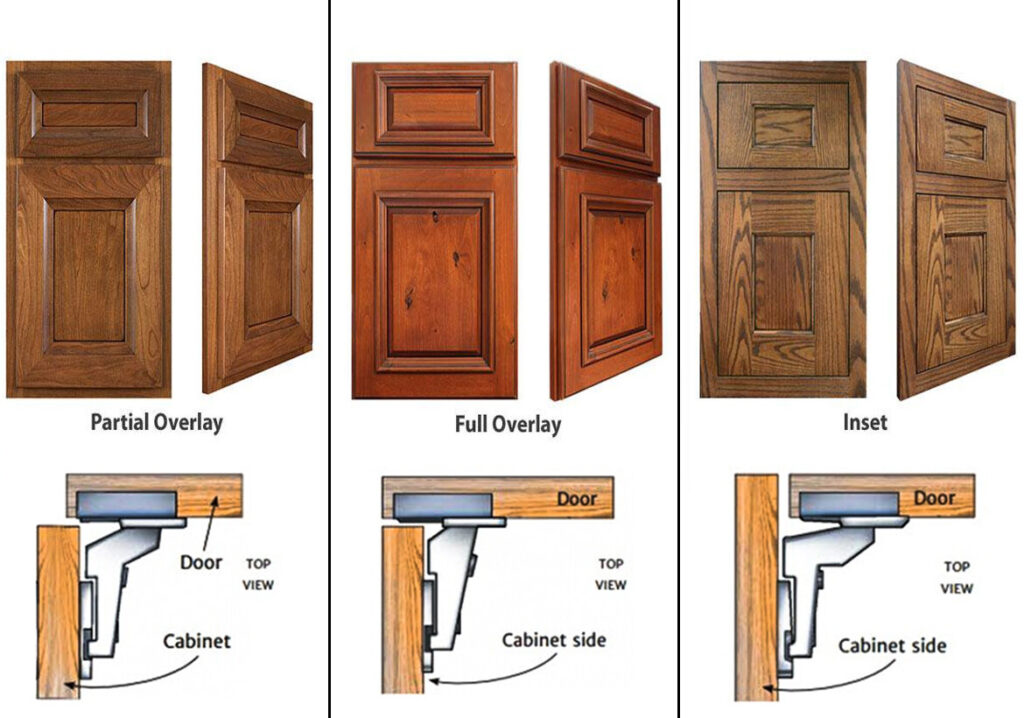Inset Kitchen Cabinets: A Comprehensive Guide to Design, Installation, and Benefits
Inset kitchen cabinets represent a sophisticated and increasingly popular choice for homeowners seeking a clean, modern aesthetic in their kitchens. Unlike overlay cabinets, where the door sits on top of the cabinet frame, inset cabinets have doors that sit flush within the frame. This subtle detail creates a seamless, frameless look that elevates the overall design of the kitchen space. This comprehensive guide will delve into the nuances of inset kitchen cabinets, covering design considerations, installation processes, pros and cons, and cost implications to help you make an informed decision.
Understanding Inset Cabinetry
Inset cabinets are characterized by their doors and drawers that sit within the face frame of the cabinet. This recessed design creates a clean, minimalist look that is highly valued in contemporary and traditional kitchen styles. The absence of any visible overlay creates a sense of spaciousness and sophistication, often making the kitchen feel larger and more refined.
The precise fit required for inset cabinets necessitates meticulous craftsmanship and careful measurements during both design and installation. This precision contributes to the higher cost associated with inset cabinetry compared to overlay options, but the resulting aesthetic is often considered worth the investment.
Design Considerations for Inset Cabinets
Choosing inset cabinets involves careful planning and consideration of several factors. The style of your kitchen, the overall size of your space, and your personal preferences will all play a role in your final decision. Here are some key aspects to keep in mind:
Cabinet Style and Material
- Wood Species: The choice of wood significantly impacts both the look and the durability of your cabinets. Popular options include oak, maple, cherry, and walnut, each offering a unique grain pattern and color.
- Cabinet Door Styles: Inset cabinets can be incorporated into various door styles, ranging from shaker and flat-panel designs to more ornate raised-panel options. Consider the style that best complements your kitchen’s overall theme.
- Finish: The cabinet finish plays a crucial role in defining the kitchen’s aesthetic. Options include painted finishes (popular for a modern feel), stained finishes (highlighting the wood grain), and even lacquered finishes for a high-gloss look.
Hardware Selection
Hardware selection is critical for inset cabinets since the handles and knobs are the most prominent features. The handle style, finish, and size should complement the cabinet’s design and overall kitchen aesthetic. Consider the functionality and ease of use of the hardware, especially if you have children or individuals with mobility issues.
Space Planning and Functionality
Accurate measurements and planning are essential for inset cabinets. The tight tolerances require precise craftsmanship and installation to ensure proper functionality and alignment. Consider the placement of appliances, sink, and other features to optimize workflow and avoid hindering accessibility.
Inset Cabinet Installation: A Detailed Overview
Installing inset cabinets is a more complex process than installing overlay cabinets, demanding precision and experience. It’s often recommended to hire professional installers to ensure a perfect fit and avoid costly mistakes. Here’s a general outline of the process:
1. Cabinet Preparation
Before installation, carefully check all cabinets for any imperfections or damage. Ensure all components are present and accounted for. Pre-assemble any necessary parts according to the manufacturer’s instructions.
2. Precise Measurement and Marking
Accurate measurements are paramount. Any discrepancies will lead to alignment issues and potential functionality problems. Use a level and measuring tape to mark the exact location for each cabinet.
3. Installation of Cabinet Frames
The cabinet frames are usually installed first, secured to the wall studs or floor using appropriate fasteners. Ensure the frames are level and plumb.
4. Door and Drawer Installation
This is the most critical step. Inset doors and drawers require precise adjustments to ensure they sit flush within the frames. Shims are often used to achieve perfect alignment. Adjust hinges and drawer slides as needed.
5. Final Adjustments and Inspection
After installation, carefully inspect all doors and drawers for proper alignment, functionality, and closure. Make any necessary adjustments to ensure everything works seamlessly.
Benefits of Inset Kitchen Cabinets
Despite the higher cost and more complex installation, inset cabinets offer several significant advantages:
- Sleek and Modern Aesthetic: The flush design creates a clean, sophisticated look that is highly sought after in contemporary kitchen designs.
- Enhanced Durability: The robust construction and precise fit contribute to the overall durability and longevity of the cabinets.
- Improved Functionality: Properly installed inset cabinets offer smooth, effortless opening and closing of doors and drawers.
- Increased Resale Value: High-quality inset cabinets significantly enhance the aesthetic appeal and resale value of a home.
Drawbacks of Inset Kitchen Cabinets
While inset cabinets offer numerous benefits, they also have some potential drawbacks:
- Higher Cost: The precision required for design and installation makes them more expensive than overlay cabinets.
- Complex Installation: Installation demands expertise and precision, often necessitating professional installation.
- More Difficult to Adjust: Adjustments after installation can be more challenging compared to overlay cabinets.
- Limited Customization Options: Some specialized or highly customized designs might be less feasible with inset cabinetry.
Inset Kitchen Cabinets vs. Overlay Cabinets: A Comparison
The choice between inset and overlay cabinets hinges on personal preference, budget, and desired aesthetic. Overlay cabinets offer a simpler, more cost-effective installation process, while inset cabinets provide a cleaner, more sophisticated look. Consider the pros and cons of each to make the best choice for your kitchen.
Conclusion
Inset kitchen cabinets offer a timeless and elegant solution for homeowners seeking a high-end kitchen design. The careful planning, precision installation, and meticulous craftsmanship required contribute to the superior quality and aesthetic appeal. While the higher cost and more complex installation may be deterrents for some, the benefits—both in terms of visual impact and longevity—make inset cabinets a worthwhile investment for many.

